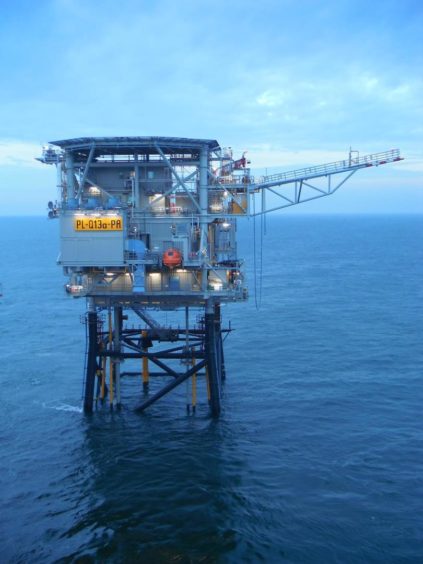
A North Sea green hydrogen project, which could set the region on its way to being a “new energy hub, has received backing from the Dutch Government.
The PosHYdon project aims to validate the integration of offshore wind, offshore gas and offshore hydrogen.
It will be housed on Neptune Energy’s Q13a-A installation in the Dutch North Sea, making it the “world’s first” offshore green hydrogen pilot on a working platform.
In order to progress PosHYdon, the Netherlands Enterprise Agency (RVO), through its Demonstration Energy and climate Innovation (DEI+) scheme, has awarded the project a subsidy.
PosHYdon plans to install a green hydrogen-producing plant on Q13a-A, which is located about 8 miles off the coast of The Hague and was the first fully electrified platform in the Dutch North Sea.
The plant will convert seawater into demineralised water, then into green hydrogen via electrolysis, which will be blended with natural gas and transported to shore via an existing pipeline.
To mark the subsidy award, a new PosHYdon consortium, comprising Neptune Energy, has been formed.
It also features partners with expertise in offshore wind, green electricity generation and hydrogen transportation.
Several firms have already teamed up with Neptune Energy on the project, including Eneco and Deme Offshore.
Lex de Groot, Neptune Energy’s managing director for the Netherlands, said: “We welcome the award of this subsidy and look forward to progressing with this exciting project on our Q13a-A platform. PosHYdon will provide the insights necessary to develop large scale green hydrogen production at sea.
“The Dutch North Sea sector has an exciting future as a ‘new energy hub’ and can play a leading role in largescale green hydrogen production for north western Europe, given its infrastructure that connects offshore with onshore.
“The integration of energy systems supports net zero goals in a smart, efficient, and costeffective manner and without disturbing existing sea ecosystems.
“The extensive infrastructure network is connected to international grids and can easily accommodate wind farms further out at sea by converting the production of green electricity into green hydrogen and transporting it to the grid onshore.
“PosHYdon will be the key to making this happen and we are excited to consider future opportunities that the pilot can help unlock.”
